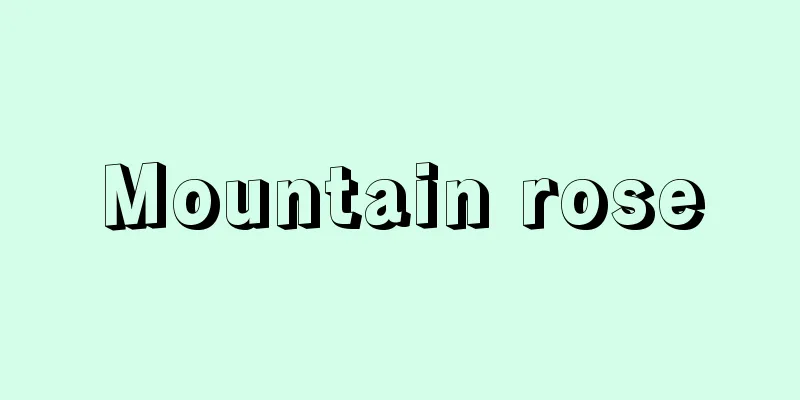Forestry Basic Law - Ringyo Kihonho

|
This law (Act No. 161 of 1964) was promulgated in July 1964 to set out the policy goals regarding Japan's forestry industry and the basic measures to achieve them. Traditionally, Japan's forestry policy was developed as a forest resource management policy centered on the maintenance and cultivation of forests under the Forest Law established in 1897 (Meiji 30). However, with the enactment of this law, forestry as an industry was the first policy goal to be aimed at. The policy goals of this law were to increase total forestry production, improve forestry productivity, and increase the income of forestry workers (Article 2). However, by the time this law was enacted, imported timber had already begun to be imported in large quantities, and by 1969 imported timber accounted for more than half of timber demand. Far from achieving the goals of this law, which were to increase total forestry production and improve the income of forestry workers, it led to a significant decline in domestic forestry production, a steep drop in the self-sufficiency rate of timber, and a sharp decline and aging of the forestry workforce. The forestry structure improvement project, which is the central policy of this law, was implemented from fiscal year 1965, but the majority of the project funds were allocated to opening forest roads and developing and strengthening forestry associations (such as projects to improve capital equipment), and the promotion of delegation of operations from forestry association members (forest owners) to the associations was promoted, in other words, the goal was consistently to reduce association members to mere forest land owners and to centralize forestry production in the forestry associations. The Forestry Basic Law obligated the government to establish and publish "basic plans for forest resources and long-term forecasts for the supply and demand of important forest products" (Article 10). The first plan was drawn up based on this in 1966, but the decline of domestic forestry and a significant drop in the self-sufficiency rate of timber led to a large discrepancy between the goals and the actual situation, and the law was forced to revise it four times: in 1973, 1980, 1987, and 1996. The law also obligated the government to publish an "annual report on trends in forestry" (Forestry White Paper) (Article 9). The white paper includes forestry trends, measures taken in the current fiscal year, and measures to be taken in the following fiscal year. Although there are limitations to the analysis that can be achieved as a government document, it became an important resource for grasping the current state of forestry and trends in policies. In the 1990s, with the collapse of forestry policy as an industry and a growing trend both at home and abroad toward emphasizing the environment, there was a shift in policy from emphasizing the economic functions of forests to emphasizing their public functions, and the Forestry Basic Law was revised to the Forest and Forestry Basic Law in 2001. [Toshikuni Noguchi] [Reference items] | | | | | |Source: Shogakukan Encyclopedia Nipponica About Encyclopedia Nipponica Information | Legend |
|
日本の林業に関する政策の目標とそれを達成するための基本的な施策を示すために1964年(昭和39)7月に公布された法律(昭和39年法律第161号)。 日本の林業政策は、旧来、1897年(明治30)成立の森林法体系のもとで、森林の維持、培養を中心とした森林資源管理政策として展開されてきたが、本法が成立し、初めて産業としての林業が政策目標として目ざされることになった。本法は林業総生産の増大、林業の生産性の向上、林業従事者の所得の増大を政策目標とした(2条)。しかし、本法が成立したときには、すでに外材の大量導入が開始され、1969年には用材需要量の過半を外材が占めることになった。本法が目標とした林業の総生産の増大も、林業従事者の所得の向上も達成されるどころか、国内林業生産の著しい後退、木材自給率の急激な低下、林業従事者の著減と高齢化がもたらされることとなった。 本法の中心的な施策である林業構造改善事業は、1965年度より講じられたが、事業費の大部分は林道開設と森林組合の育成強化(資本装備の高度化事業など)にあてられ、森林組合員(森林所有者)から組合への施業の委託促進、すなわち、組合員の単なる林地所有者への後退と林業生産の担い手の森林組合への一元化が一貫して追求されてきた。 林業基本法は、「森林資源に関する基本計画及び重要な林産物の需給に関する長期の見通し」を樹立し、公表することを政府に義務づけた(10条)。これに基づき第1回目が1966年(昭和41)に策定されたが、国内林業の後退と木材自給率の著しい低下によって目標と実態とに大幅な乖離(かいり)が生じ、1973年、1980年、1987年、1996年(平成8)と4回の改定を余儀なくされた。また、本法は、「林業の動向に関する年次報告」(林業白書)の公表も義務づけた(9条)。白書は、林業の動向、当年度に講じた施策、翌年度に講じようとする施策からなっており、政府文書としての分析の限界はあるものの、林業の現状や施策の動向をつかむうえで重要な資料となった。 1990年代に入って、産業としての林業政策の破綻(はたん)と内外での環境重視の趨勢(すうせい)のなかで、森林の経済的機能重視から公益的機能重視への政策転換が図られ、林業基本法は2001年に森林・林業基本法に改正された。 [野口俊邦] [参照項目] | | | | | |出典 小学館 日本大百科全書(ニッポニカ)日本大百科全書(ニッポニカ)について 情報 | 凡例 |
<<: Forestry management - forestry management
Recommend
Fire in Ushicho - Ushicho Kaji
…It is also called the Kurumamachi Fire, the Ushi...
Kamakura Great Buddha
A seated statue of Amida Nyorai at Kotoku-in Templ...
Gamzigrad
...The palace built by Emperor Diocletian (295-30...
Chamberlain - Jiju
An official close to the Emperor. (1) The Taiho C...
Kikunae Ikeda
A physical chemist known for inventing Ajinomoto....
thee
…The words that mean “tea” around the world today...
Rumex punctata - Rumex punctata
...However, its habitat in Japan is thought to be...
Oboi - worship
…Because he was a young emperor, four regents wer...
Oniezushi - Oniezushi
...Chirashi-zushi is often called gomoku-zushi in...
New Year's gift - Otoshidama
→ New Year's gift Source: Shogakukan Encyclop...
Kawahibimidoro - Kawahibimidoro
…There are several closely related species, but b...
Neofinetia falcata (English spelling)
An evergreen perennial plant of the orchid family....
"Histoire des oracles" (English)
…Furthermore, in “Conversations on the Plurality ...
Iron paste parent - Kanetsukeoya
…After that, they were allowed to date young peop...
Asturias Bird - Asturias Bird
…A city and region in northern Iran. It was calle...









